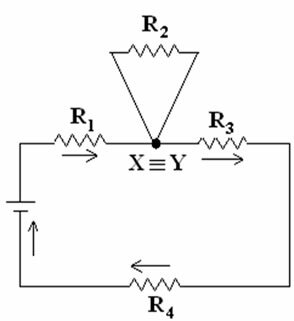When we watch fire-related news on TV news, we are left wondering “but what caused the fire?”. Many fires are caused by short circuits that occur in electrical circuits, in which the electrical current is rapidly increased.
We can say that the short circuit occurs because the electric current that leaves the generator travels through the entire circuit and returns with a very high intensity.
It can cause a lot of damage to electrical circuits, as it causes very violent reactions due to the instantaneous dissipation of energy. In these reactions, explosions, heat dissipation, sparks, etc. occur.
In order to avoid a short circuit, fuses or circuit breakers are placed in the place where electric current passes. Circuit breakers work like an automatic switch, because when they detect a power failure, they are automatically turned off, thus leaving the circuit open. One of the features of circuit breakers is that they can be reset manually. Fuses, on the other hand, have the same characteristic, being differentiated by the fact that they are unusable when they carry out the interruption.
Short circuit
When two points in a circuit are connected by a wire of negligible resistance, we say that there is a short circuit, which means that the two points have the same potential. In some cases, by causing a short circuit we can eliminate a resistor from the circuit, as it will no longer be carried by current.
In the figure below we see a circuit in which points X and Y were connected by a wire of negligible resistance.
Do not stop now... There's more after the advertising ;)

Circuit connected by a wire of negligible resistance
When the electric current reaches point X, it is completely deflected by the resistance wire r = 0, going to point Y. Thus, points X and Y have the same potential and can be considered the same point, as shown in the figure below.

Resistance R2 is no longer traveled by electrical current
Resistance resistor R2 is not current carried and can be eliminated from the circuit. Thus, the equivalent resistance of this circuit is calculated as follows:
Req = R1 + R3 + R4
By Domitiano Marques
Graduated in Physics
Brazil School Team
Electricity - Physics - Brazil School
Would you like to reference this text in a school or academic work? Look:
SILVA, Domitiano Correa Marques da. "Short circuit"; Brazil School. Available in: https://brasilescola.uol.com.br/fisica/curtocircuito.htm. Accessed on June 28, 2021.



